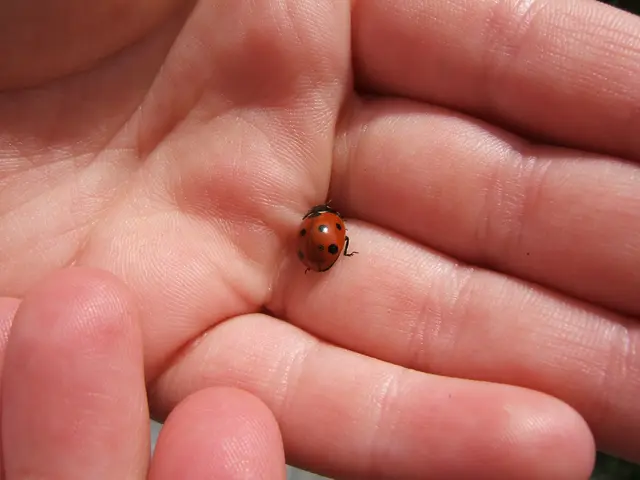Clear and Simple Guide on MRSA Colonization
MRSA Colonization Explored: Ways It Spreads, Strategies for Warding Off, and Other Key Points
Let's take a straightforward look at MRSA colonization and what it entails. MRSA, or Methicillin-resistant Staphylococcus aureus, can reside on a person's body without causing any visible symptoms or MRSA infections.
In the human body, MRSA bacteria can be found in moist areas such as the:
- nose
- throat
- groin
- armpits
- skin folds
- perineal area
Although it may not show any signs of trouble, MRSA colonization is a concern for healthcare professionals. This is because people unknowingly carrying MRSA can pass it along, triggering infections, particularly in healthcare settings.
MRSA infections are a cause for concern because they are caused by a type of Staphylococcus aureus that is resistant to numerous common antibiotics, including methicillin, penicillin, amoxicillin, and oxacillin. This antibiotic resistance makes treatment more challenging and potentially riskier, especially for vulnerable individuals.
MRSA can spread through:
- Close contact with individuals who have an MRSA infection or colonization.
- Using and sharing unclean equipment or supplies.
- Contamination of household surfaces and environments.
When the immune system is compromised or there's an open wound, colonization may progress to an infection. To prevent this, follow good hygiene practices such as:
- Regular hand washing and showering with antiseptic soap.
- Keeping wounds clean and covered.
- Avoiding the sharing of personal items like towels, razors, clothing, and bedding.
- Washing clothes, sheets, and towels in hot water and drying them on high heat.
- Frequent disinfection of surfaces.
In medical settings, medical experts may screen individuals for MRSA, particularly those who are preparing for surgery. If MRSA colonization is detected, they may prescribe a nasal cream or spray, body wash, and shampoo to reduce the bacteria. This treatment typically lasts for about 5 to 10 days.
Keep an eye on skin infections, especially at the sites of cuts or abrasions. Look for signs like:
- Pain
- Redness
- Pus
- Swelling
- Area feels warm to the touch
By adhering to hygiene guidelines at home and in medical settings, you can minimize the risk of MRSA colonization and infections.
Fun Facts- Learn more about MRSA and its peculiarities: * Can MRSA resolve on its own? * Can chlorine effectively kill MRSA? * Is it possible to always carry MRSA bacteria?
Sources:- [1] Centers for Disease Control and Prevention (CDC). (n.d.). MRSA. Retrieved from https://www.cdc.gov/mrsa/lifecycle/index.html- [2] Ong, J. E., Walsh, T. J., & Boulton, C. (2002). Prevention of Staphylococcus aureus bacteremia in hospitalized patients: A systematic review of the evidence for Effectiveness of Decolonization. Clinical Infectious Diseases, 34(10), 1291-1300.- [3] Kumar, A., Tong, W., Mercy, J. A., & Chen, L. S. (2010). Effectiveness of chlorhexidine bathing in reducing methicillin-resistant Staphylococcus aureus infections. American Journal of Infection Control, 38(6), 499.e1-499.e7.- [4] Ramphal, R., & Pittet, D. (2014). Multimodal approach to decolonization strategies and reducing healthcare-associated methicillin-resistant Staphylococcus aureus infection. Swiss Medical Weekly, 144, w13972.- [5] McNeil, M. A., Tarwater, K., & National Research Council (U.S.). Committee on Environmental Science and Technology, Task Force on Healthcare-Associated Infections in the 21st Century. (2008). Healthcare-associated infections: progress and possibilities. National Academies Press.
- MRSA, or Methicillin-resistant Staphylococcus aureus, can reside on a person's body without causing any visible symptoms, known as MRSA colonization.
- MRSA bacteria can be found in moist areas such as the nose, throat, groin, armpits, skin folds, perineal area, and skin.
- Although MRSA colonization may not show any signs of trouble, healthcare professionals consider it a concern due to the potential for unknowingly spreading MRSA and triggering infections.
- MRSA infections are a cause for concern because the bacteria are resistant to numerous common antibiotics, including methicillin, penicillin, amoxicillin, and oxacillin.
- MRSA can spread through close contact with individuals who have an MRSA infection or colonization, using and sharing unclean equipment or supplies, and contamination of household surfaces and environments.
- Good hygiene practices, such as regular hand washing and showering with antiseptic soap, keeping wounds clean and covered, avoiding the sharing of personal items, washing clothes, sheets, and towels in hot water and drying them on high heat, and frequent disinfection of surfaces, can help minimize the risk of MRSA colonization and infections.
- In medical settings, medical experts may screen individuals for MRSA and prescribe a nasal cream or spray, body wash, and shampoo to reduce the bacteria if colonization is detected, typically lasting for about 5 to 10 days.
- Pay attention to skin infections, especially at the sites of cuts or abrasions, and look for signs like pain, redness, pus, swelling, and an area feeling warm to the touch.
- By adhering to hygiene guidelines at home and in medical settings, one can minimize the risk of MRSA colonization and infections.
- MRSA is a concern for medical-conditions, chronic diseases like chronic kidney disease, respiratory conditions, digestive health, eye-health, hearing, health-and-wellness, fitness-and-exercise, autoimmune-disorders, mental-health, skin-care, therapies-and-treatments, and nutrition, as well as neurological disorders and skin-conditions.
- MRSA infections can cause complications like migraines and cardiovascular health issues, emphasizing the need for prevention and management.
- Some alternatives to traditional treatments, such as CBD, might offer benefits for managing symptoms and potential side effects associated with MRSA infections, but further research is required to confirm their effectiveness.








